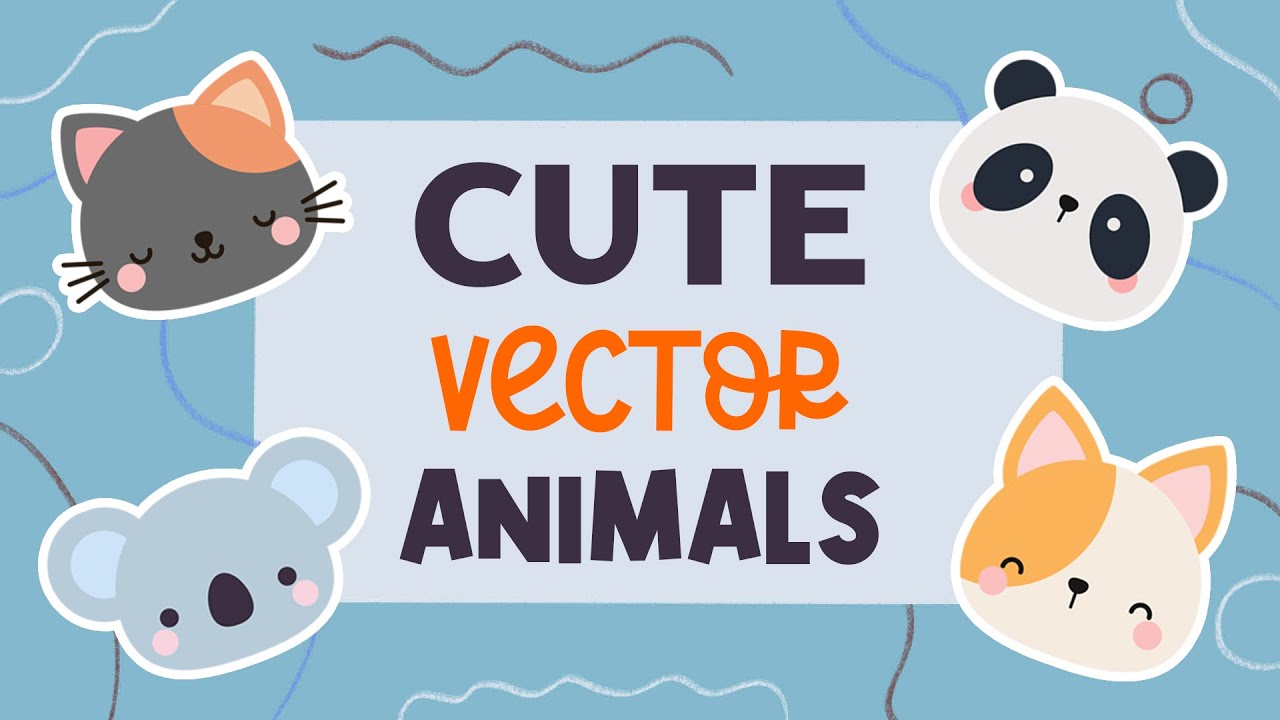
Introduction:
In the realm of digital design, Adobe Illustrator stands as a beacon of creativity, offering a myriad of tools and features to bring artistic visions to life with precision and finesse. Among its many capabilities, the ability to create vector animals provides artists and designers with the opportunity to craft lifelike illustrations that are scalable and versatile. Whether you’re a seasoned illustrator or an aspiring designer, understanding how to effectively wield the tools in Adobe Illustrator to create vector animals is essential for unlocking new dimensions of creativity. In this comprehensive guide, we’ll embark on a journey to explore the techniques and tools needed to craft stunning vector animals from scratch.
Chapter 1: Planning Your Animal Illustration
Before diving into the creation process, it’s important to plan your animal illustration. Consider the species, pose, and style of the animal you want to create. Research reference images to understand the anatomy, proportions, and features of the animal. Sketch out rough ideas and determine the composition and layout of your illustration. Pay attention to details such as fur, feathers, scales, and facial expressions to capture the essence of the animal.
Chapter 2: Setting Up Your Illustrator Document
Once you’ve finalized your animal illustration concept, it’s time to set up your Illustrator document. Create a new document with dimensions that suit your intended illustration size and resolution. Consider whether you’ll be creating a print or web-based illustration and adjust the document settings accordingly. Organize your workspace by creating layers for different elements of your illustration, such as the animal’s body, features, and background.
Chapter 3: Creating the Basic Shape of the Animal
Start by creating the basic shape of the animal using the pen tool or shape tools in Adobe Illustrator. Break down the animal’s body into simple geometric shapes, such as circles, ovals, and rectangles, and use them as a framework to build upon. Pay attention to the proportions and anatomy of the animal, and use reference images to guide your design. Experiment with different shapes and arrangements to create a solid foundation for your illustration.
Chapter 4: Refining the Shape and Adding Details
Once you’ve established the basic shape of the animal, it’s time to refine the design and add details. Use the pen tool to add curves, contours, and defining features to the animal’s body. Pay attention to details such as muscle definition, fur patterns, and facial features to bring the animal to life. Experiment with different stroke weights and styles to add depth and dimension to your illustration. Use the direct selection tool to adjust individual anchor points and curves until you achieve the desired look and feel.
Chapter 5: Adding Color and Texture
After refining the shape of the animal, it’s time to add color and texture to your illustration. Use the color picker tool to select the base colors for the animal’s fur, feathers, or scales. Experiment with gradients, patterns, and textures to add depth and realism to your illustration. Pay attention to light and shadow to create volume and dimensionality. Use the appearance panel to apply effects such as gradients, textures, and transparency to individual shapes and elements of the animal.
Chapter 6: Creating Facial Features and Expressions
The face is often the focal point of an animal illustration, so it’s important to spend time creating facial features and expressions that capture the essence of the animal. Use the pen tool to create eyes, noses, mouths, and other facial features with precision and accuracy. Pay attention to details such as eye shape, pupil size, and facial proportions to convey the animal’s personality and mood. Experiment with different expressions, such as happy, sad, or curious, to evoke emotions and engage the viewer.
Chapter 7: Adding Background and Finishing Touches
Once you’ve completed the animal illustration, it’s time to add a background and finishing touches to enhance the overall composition. Use the shape tools and gradients to create a background that complements the animal and adds context to the illustration. Experiment with different colors, textures, and patterns to create depth and atmosphere. Use the layers panel to arrange the elements of your illustration and make adjustments as needed. Finally, add any additional details or effects to polish your illustration and make it stand out.
Chapter 8: Saving and Exporting Your Illustration
Once you’re satisfied with your vector animal illustration, it’s time to save and export your artwork for sharing or further editing. Save your Illustrator document in a compatible file format, such as AI or PDF, to preserve the vector properties of your illustration. If you’re creating artwork for web or screen-based applications, consider exporting your illustration as an SVG file for scalability and compatibility with web browsers. For print-based projects, export your artwork as a high-resolution raster image in formats such as JPEG or PNG.
Conclusion:
Creating vector animals in Adobe Illustrator is a rewarding and fulfilling endeavor that allows artists and designers to unleash their creativity and imagination. By following the techniques and tips outlined in this comprehensive guide, you’ll be able to craft stunning illustrations that capture the beauty and essence of the animal kingdom. So grab your stylus, set your sights on the canvas, and let your creativity soar as you bring your favorite animals to life in vector form.